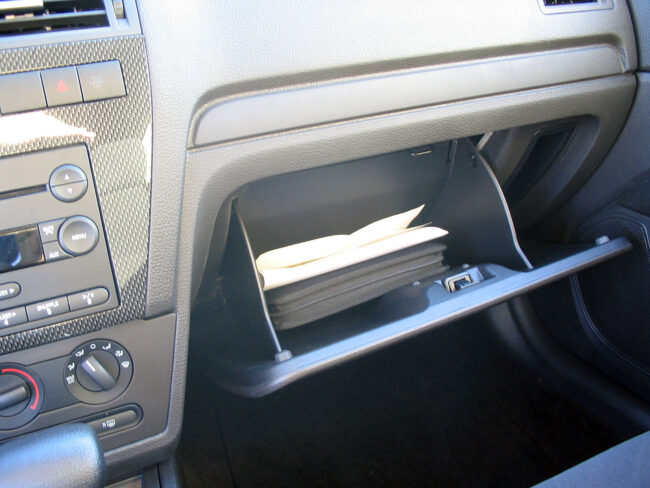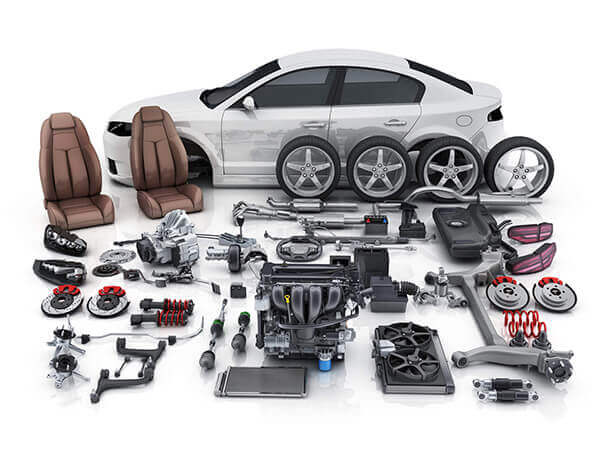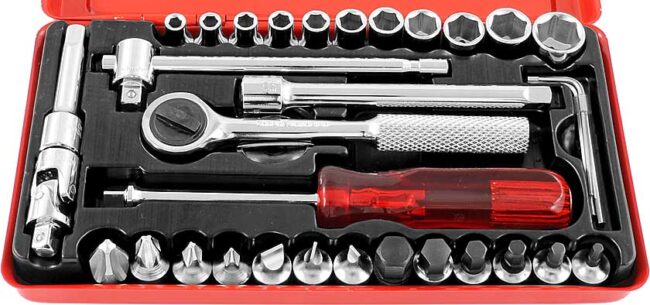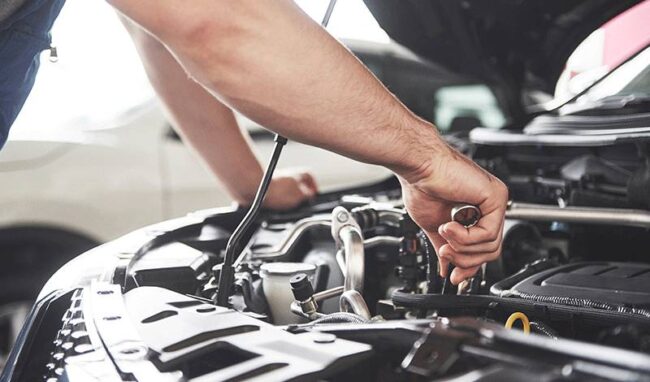Car Repair for Beginners – How to Navigate the World of Auto Parts Like a Pro!

Source: freepik.com
When I first started working on my vehicle, it felt like stepping into a new world. With so many moving parts, technical terms, and options, getting the right tools and making sure you’re fixing the right thing can feel overwhelming. However, through time and experience, I’ve learned to approach car maintenance with confidence. Whether you’re dealing with an engine issue or just trying to replace a lightbulb, knowing how to source parts and perform repairs is key.
My goal in this article is to help you become more comfortable with your car’s needs, using simple, practical tips.
Key Points:
- Know the basics of your vehicle.
- Learn the essential tools for maintenance.
- Understand how to source used auto parts.
- Be familiar with common repairs.
- Always refer to your vehicle manual.
Know Your Vehicle

Before you can fix anything, you need to be familiar with what you’re working on. Every vehicle has its unique build, and what works for one model may not work for another. Take time to familiarize yourself with your vehicle’s manual. It contains critical information about what parts are used and recommended maintenance intervals. For beginners, this manual will serve as your guide for every repair you perform. Knowing the year, make, and model is essential for sourcing the right parts.
Keep a small notebook in your glove compartment with notes on your vehicle’s specifics, including its service history. This will come in handy when talking to professionals or searching for the correct part online.
Finding Quality Used Auto Parts
Not every repair requires brand-new parts. In fact, used auto parts are often just as reliable and can save you money. Companies like Rectangle Auto Supply offer a wide selection of new and used parts for various vehicle models. I’ve had great success sourcing parts from such places, especially for older cars where new parts are either hard to find or overpriced.
When sourcing used parts, always check their condition. Rust, corrosion, or wear can signal that the part won’t last long. Reputable suppliers will often test and verify used parts, giving you peace of mind. It’s also a good idea to check their return policy in case you need to swap out a part.
Sourcing Parts Online vs. In-Store

Today, you have more options than ever for sourcing parts. Both online and in-store suppliers have their benefits, but knowing when to use each can save you time and frustration.
Online Parts Suppliers:
The internet gives you access to a global inventory. If you’re looking for rare or hard-to-find parts, online is the way to go. You can quickly compare prices and read reviews. However, shipping times can be long, and you won’t be able to physically inspect the part before buying.
In-Store Auto Parts Suppliers:
When you buy in person, you can inspect parts before you purchase. This is particularly useful when buying used parts. In addition, in-store experts can offer advice and help guide your decisions.
I prefer to use a combination of both. I’ll source parts online when I’m looking for something specific, but for urgent repairs, I visit local shops.
Common Car Repairs You Can Repair Yourself

Many beginners feel intimidated by the idea of fixing their car, but some tasks are quite simple and can be done with minimal experience. Here are a few repairs that you can start with:
1. Changing the Oil
This is one of the easiest things you can do to maintain your vehicle’s performance. Make sure you have an oil filter, oil pan, and the correct type of oil. Refer to your vehicle manual to know how much oil is needed and what type to buy.
2. Replacing Air Filters
A clogged air filter can reduce your engine’s efficiency. Changing the air filter requires no more than a screwdriver. It usually takes just a few minutes to complete.
3. Replacing Windshield Wipers
Your vehicle’s wipers will eventually wear out and need replacement. All you need to do is find the correct size for your wipers, which can be found in the manual, and snap the new ones into place.
4. Changing Brake Pads
Brake pads are one of the most important parts of your car. Over time, they wear down and need replacing. You’ll need a jack, a lug wrench, and a few basic tools. It can be done in an afternoon with some patience.
Essential Tools for Car Maintenance

Having the right tools is half the battle. You don’t need a full professional kit to begin, but a few essentials will make your repairs smoother. A good socket wrench set, pliers, screwdrivers, a jack, and a tire iron are the foundation of any repair toolkit. These tools are widely used across different maintenance tasks, so they will always come in handy.
Also, consider buying a torque wrench. Tightening nuts and bolts to the manufacturer’s specified torque is important for many repairs, such as tire replacement or installing new brake pads. With a torque wrench, you can ensure you’re applying the correct force, avoiding over-tightening or under-tightening bolts.
Troubleshooting Common Issues
When something goes wrong with your vehicle, the first step is diagnosing the issue. Strange noises, warning lights, or sudden changes in performance often give clues about what’s wrong.
Noises:
A screeching noise when you brake often points to worn-out brake pads. Clicking noises when turning could mean an issue with the CV joint. Grinding sounds from the engine could indicate low oil levels or problems with internal engine parts.
Warning Lights:
Your vehicle’s dashboard lights can tell you a lot. A check engine light can indicate many things, ranging from something simple like a loose gas cap to more serious issues like an exhaust problem. Always refer to your manual or use an OBD-II scanner to read error codes.
Performance Changes:
If your vehicle is running rough, misfiring, or losing power, the issue could be with your spark plugs or fuel injectors. Replacing spark plugs is relatively easy, but you’ll need a few special tools.
Saving Money on Repairs

DIY repairs are one of the best ways to save money. Labor costs for repairs can be significant, but by doing the work yourself, you eliminate that expense. However, keep in mind that there are times when hiring a professional is necessary. For complex repairs involving your vehicle’s transmission or engine, professional help is the way to go.
To keep costs down, always shop around for parts. Compare prices from different suppliers, both online and in-store. I’ve saved a lot by purchasing used parts and searching for deals.
Avoiding Common Mistakes
Even experienced people make mistakes during repairs, but with a few tips, you can avoid some of the most common issues.
1. Not Having the Right Tools
Having the correct tools is crucial. Don’t attempt a repair if you’re missing the tools needed. This can lead to more damage or incomplete repairs.
2. Ignoring Safety Precautions
Always ensure your vehicle is on level ground and securely supported before you start working underneath it. Safety should never be an afterthought.
3. Skipping the Manual
Never assume you know what you’re doing without checking the manual. Even for seemingly simple tasks, always refer back to the instructions.
Conclusion
Learning to maintain your vehicle is a valuable skill. Not only does it save money, but it also allows you to understand your vehicle better. By familiarizing yourself with your vehicle’s components, sourcing quality parts, and taking on small repairs, you’ll build the confidence to tackle larger tasks in the future. Always stay informed, use the right tools, and never hesitate to seek help when you need it.

 Main Pluses to Have Your Own Chauffeur
Main Pluses to Have Your Own Chauffeur  How Driving Rules are Different around the World
How Driving Rules are Different around the World  A Complete Guide to Personalized Gift Ideas That Carry Real Thought and Value
A Complete Guide to Personalized Gift Ideas That Carry Real Thought and Value  Neuschwanstein Castle From Munich Day Trip Guide
Neuschwanstein Castle From Munich Day Trip Guide  Oxford ─ England’s City of Dreaming Spires
Oxford ─ England’s City of Dreaming Spires  Creative Gift Ideas for Anime Lovers and Collectors: Unique Picks You Will Adore
Creative Gift Ideas for Anime Lovers and Collectors: Unique Picks You Will Adore